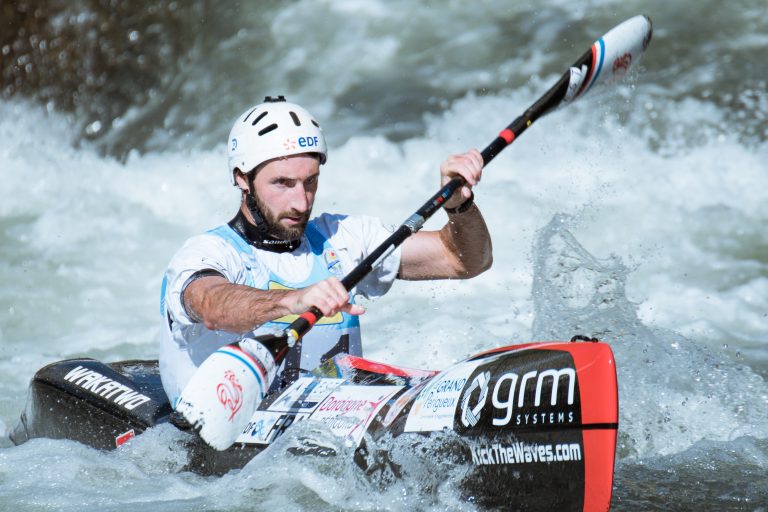General Rules of Standup Paddleboarding
When you step onto a standup paddleboard, remember that safety should always be your top priority. But what exactly are the general rules you need to follow to ensure a safe and enjoyable paddleboarding experience? From essential safety gear to proper paddling techniques and understanding right of way, there are key guidelines that every paddleboarder should adhere to. Are you ready to navigate the waters with confidence and mastery?
Safety Gear and Equipment
Before embarking on any standup paddleboarding adventure, it is crucial to ensure you have the necessary safety gear and equipment to keep you protected and prepared for any situation. Choosing appropriate safety gear is paramount for your well-being on the water. The most essential safety gear includes a personal flotation device (PFD), which should always be worn while paddleboarding. Make sure your PFD fits properly and is Coast Guard-approved.
In addition to a PFD, a leash is another vital piece of equipment. A leash attaches you to your paddleboard, preventing it from getting away from you in case of a fall. It also helps you stay connected to your board, making it easier to climb back on if you fall off. Furthermore, consider wearing protective gear like a rash guard or wetsuit to shield your skin from the sun and potential scrapes.
Paddling Techniques and Stance
Now that you have your safety gear and equipment in order, let's paddle into the essential techniques and proper stance for standup paddleboarding. To maximize paddling efficiency, focus on maintaining proper body alignment. Keep your back straight, shoulders relaxed, and engage your core muscles to generate power with each stroke. Remember, the power comes from your core, not just your arms.
When it comes to balance techniques, foot positioning is key. Stand with your feet parallel and about hip-width apart, centered on the board for stability. Your gaze should be forward, not down at your feet. To turn, use sweeping strokes on either side of the board, shifting your weight slightly towards the direction you want to go.
Finding the right balance between power and finesse will help you glide smoothly through the water. Keep practicing these techniques, and soon you'll be confidently navigating various water conditions like a pro.
Understanding Right of Way
To ensure smooth and safe navigation while standup paddleboarding, it is essential to understand the rules regarding right of way on the water. Right of way etiquette plays a crucial role in maintaining order and preventing accidents. Here are some key points to consider:
- Yielding to Non-Motorized Vessels: Always give way to non-motorized vessels like kayaks, canoes, and paddleboards. This shows respect for others sharing the water and helps avoid unnecessary conflicts.
- Passing Safely: When overtaking another paddler, give a clear signal and pass on the side opposite to their paddle. This ensures a safe overtaking maneuver and reduces the risk of collisions.
- Crossing Paths: When two paddlers are on a collision course, the paddler on the right has the right of way. Be mindful of your surroundings to avoid abrupt movements and potential accidents, especially in crowded waters.
Understanding these right of way principles will not only enhance your paddleboarding experience but also contribute to a harmonious environment on the water.
Weather and Water Conditions
Before you head out for a standup paddleboarding session, it's crucial to consider the weather and water conditions. Ensuring your safety in the water involves checking the weather forecast and understanding currents and tides. By being informed about these factors, you can enjoy your paddleboarding experience to the fullest while staying safe.
Safety in Water
Ensuring your safety while standup paddleboarding involves staying informed about weather conditions and water conditions to make informed decisions before heading out on the water. When it comes to safety in water, here are some crucial points to consider:
- Stay Aware: Always check the weather forecast and water conditions before paddling out. Sudden changes can be risky.
- Know Emergency Procedures: Familiarize yourself with basic water rescue techniques and emergency procedures. Being prepared can save lives.
- Use Safety Gear: Wear a leash, personal flotation device (PFD), and carry a whistle. These simple items can make a big difference in an emergency.
Being mindful of these aspects will help you enjoy paddleboarding safely and with peace of mind.
Checking Weather Forecast
When planning your standup paddleboarding adventure, be sure to check the weather forecast and water conditions to ensure a safe and enjoyable experience on the water. Keeping an eye on the weather is crucial for your safety. Here are some key factors to consider before heading out:
| Weather Forecast | Water Conditions | Safety Tips |
|---|---|---|
| Check for wind conditions to avoid strong gusts. | Look out for surfing waves; they can affect your balance. | Always wear a leash to stay connected to your board. |
| Ensure there are no storms or lightning in the area. | Check beach access and launch points for convenience. | Bring a life jacket and whistle for emergencies. |
| Monitor temperature changes to dress appropriately. | Be mindful of currents and tides for smoother paddling. | Paddle with a buddy or inform someone of your route. |
Understanding Currents and Tides
To navigate safely and effectively during your standup paddleboarding excursions, understanding currents and tides is essential for optimizing your experience on the water. Here's what you need to know:
- Current Prediction: Stay informed about the direction and speed of currents in the area where you plan to paddle. This knowledge will help you plan your route and avoid getting caught in strong currents.
- Tidal Movement: Be aware of how tides can affect water levels and currents during your paddleboarding session. Understanding the ebb and flow of tides will help you make better decisions while on the water.
- Safety First: Always prioritize safety by wearing a leash, carrying a personal flotation device, and informing someone about your paddleboarding plans. Being prepared for unexpected changes in currents or tides is crucial for a successful outing.
Tips for Navigation and Maneuvering
Navigating and maneuvering on a standup paddleboard requires a combination of balance, strength, and technique to move smoothly through the water. To master these skills, it's essential to understand advanced techniques and surf conditions. When paddling in the waves, always be aware of wave etiquette to ensure a safe and enjoyable experience for yourself and others.
Turning techniques play a crucial role in navigating different water conditions. To execute sharp turns, shift your weight towards the direction you want to go while using your paddle to provide additional support. In contrast, for wider turns, use a sweeping motion with your paddle while adjusting your body position accordingly. Practicing these maneuvers will enhance your ability to navigate effectively.
Proper Care and Storage
When it comes to ensuring your standup paddleboard stays in top shape, there are key aspects to consider. From choosing the right storage location to employing effective cleaning and drying techniques, proper care is essential. Additionally, implementing equipment maintenance tips can help prolong the lifespan of your gear.
Storage Location Considerations
Consider the ideal storage location for your standup paddleboard to ensure its longevity and performance remain top-notch. To keep your board in prime condition, follow these storage location considerations:
- Storage Space Optimization: Utilize wall-mounted racks or ceiling hoists to free up floor space and keep your paddleboard safe from potential damage.
- Proper Board Positioning: Store your board horizontally to prevent warping and maintain its shape over time.
- Protection Measures: Use a board bag or cover to shield your paddleboard from dust, sunlight, and accidental scratches, ensuring it stays in top condition for your next adventure.
Cleaning and Drying Techniques
To maintain your standup paddleboard's longevity and performance, it is essential to properly clean and dry it after each use. Utilizing eco-friendly products for cleaning not only benefits the environment but also helps preserve your board. When cleaning, consider DIY solutions like a mixture of water and mild dish soap to gently scrub away dirt and grime. For quick drying, prop your board up in a well-ventilated area or use a towel to absorb excess moisture. Proper disposal of any cleaning agents is crucial to prevent harm to water bodies. By incorporating these practices into your routine, you ensure that your standup paddleboard remains in top condition for many adventures to come.
Equipment Maintenance Tips
Maintaining your standup paddleboard through proper care and storage is essential for prolonging its lifespan and ensuring optimal performance on the water. To keep your equipment in top shape, follow these tips:
- Regular Inspections: Check your board for any signs of damage or wear, such as cracks or dings, and promptly address any issues to prevent further damage.
- Proper Board Repair: Invest in a quality repair kit so you can fix minor damages yourself, ensuring your board stays in excellent condition for longer.
- Paddle Maintenance: Rinse your paddle with fresh water after each use to remove saltwater or debris, and store it properly to prevent warping or damage. Proper care of your paddle extends its lifespan and maintains its performance.
Frequently Asked Questions
How Can I Prevent Muscle Soreness After a Long Paddleboarding Session?
After a long paddleboarding session, prevent muscle soreness by stretching before and after, hydrating well, and focusing on recovery strategies like foam rolling. Maintain proper form to reduce strain on muscles. Stay loose and limber!
Are There Any Specific Regulations or Guidelines for Paddleboarding in Certain Bodies of Water?
When paddleboarding, it's crucial to follow safety regulations and river restrictions. Make sure you meet equipment requirements and adhere to lake guidelines. Being informed keeps you safe and the waterways enjoyable for all.
Can I Bring My Dog on a Paddleboarding Excursion?
You can totally bring your dog on a paddleboarding excursion! Just ensure dog safety by having them wear a life jacket. Consider equipment like a non-slip pad for their comfort. Training tips help, and look for pet-friendly locations for a fun outing.
What Should I Do if I Encounter Marine Wildlife While Paddleboarding?
If you encounter marine wildlife while paddleboarding, stay calm and give them space. Avoid sudden movements and loud noises. Remember, you're a guest in their home. Respect their habitat, prioritize safety, and enjoy these special wildlife interactions.
Is It Safe to Paddleboard Alone, or Should I Always Go With a Group?
Feeling the call of the water? When it comes to solo safety versus group preference in paddleboarding, consider this: While going alone can be serene, paddling with pals ensures support and shared moments.






